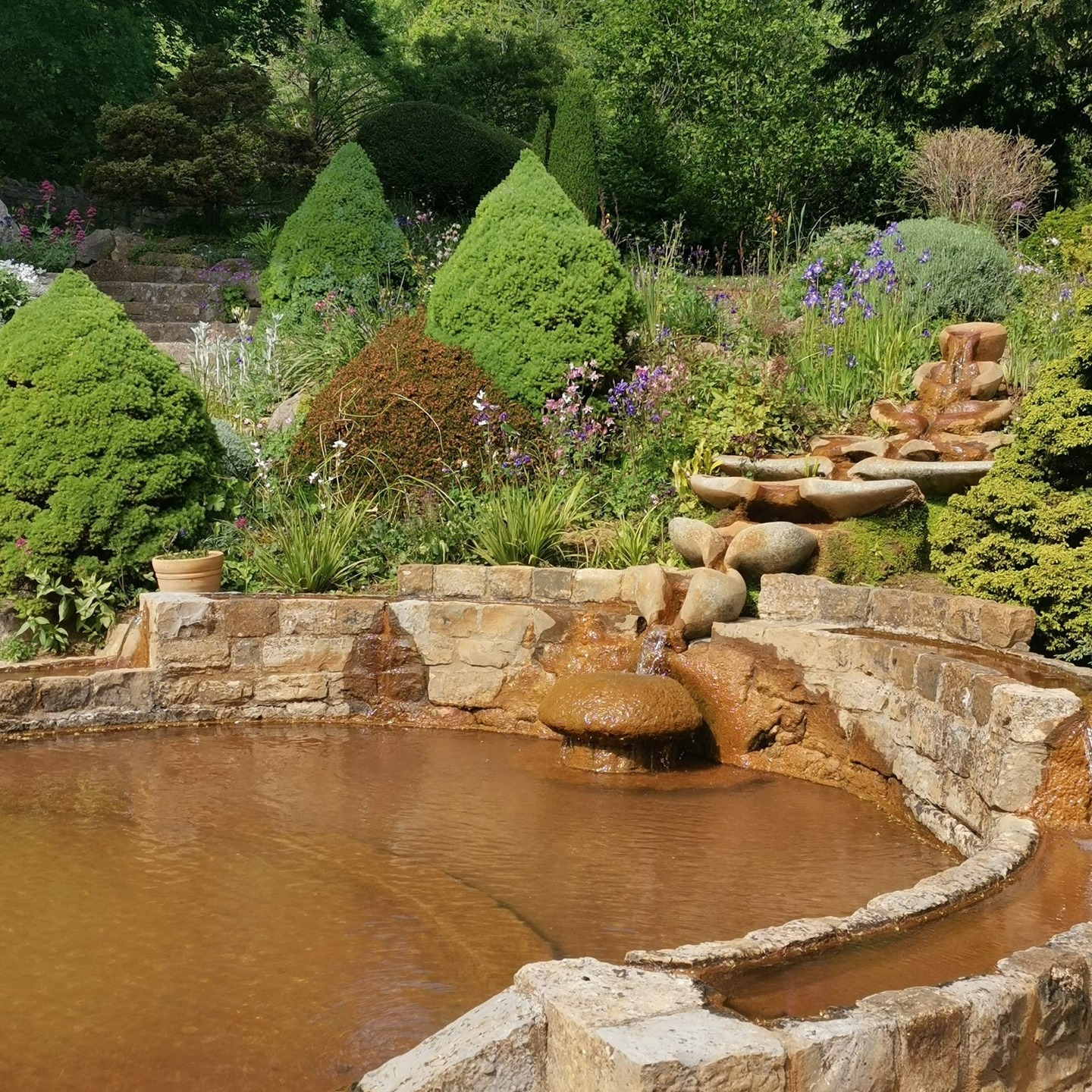Between two hills, the Tor and Chalice Hill, in Glastonbury, Somerset, there is an ancient Spring that flows from the ground in the valley. This is the Chalice Well, sometimes called ‘The Blood Well’, whose waters constantly flow at 25,000 gallons per day (13650 litres) and at a constant temperature of 52 degrees Farenheit (11 degrees centigrade). The Well today is surrounded by beautiful gardens in the Summerlands, where Tennyson wrote, ‘The island valley of Avalon, where falls not hail, or rain, or any snow.’ Water diviners and specialists have reported that the Spring has a ‘primary’ origin coming from deep within the earth. The dowser Sig Lonegren has dowsed many sites around the world and says, ‘The water doesn’t come from above. It comes from below and so is not dependent on rainfall and begins its existence deep within the bowels of our Mother, the Earth.’ The Spring has never been known to fail and in the dry years of 1921-22 it was the sole means of saving the whole town from drought. Chalice Well water is freely available from the Lion's Head fountain in the garden and also from Wellhouse Lane opposite the White Spring.
It is called a chalybeate spring because of its rich iron content which colours the water red and leads to many of the adventurous myths that surround the Chalice Well site including that of Joseph of Arimathea visiting and burying the two cruets containing the blood and water from Christ’s wounds.
The Well-shaft is approximately 3’5” x 3’5” and is constructed from large squared blocks of local lias. The total depth is 9 feet with the lower five and a half feet of the walls undisturbed while the blocks above this height have worn surfaces. One suggestion is that these upper stones are the remains of a corbelled roof. The walls of the shaft are bonded and fit very closely.

The archaeologist Dr. Raleigh Radford, upon examining the Well in the 1960’s considered the stones of the Well-shaft to be consistent with dates in the 12th century before 1184 AD or with a re-use of stones salvaged from the Abbey after the fire of that date. It was found that a water supply coming from Chalice Well was introduced into the new extensions of Glastonbury Abbey in about 1220 AD. Leading off the main shaft there is another space or ‘room’, often referred to as the inner chamber, which was probably constructed around 1750 with additions or alterations in 1820. This acted as a sedimentation tank to ensure a clean supply of water to the pilgrim’s healing pool in King Arthur's Court which is possible to walk through. Interestingly the inner chamber is built to ancient measurements used by both Egyptian and early Christian builders.








When the Trust founder Wellesley Tudor Pole employed Philip Rahtz to excavate near the Well in 1961 he not only found an ancient yew stump but also several dozen flints (upper Palaeolithic or Mesolithic) and a shard of Iron Age pottery alongside Roman and mediaeval shards suggesting human activity around the Well in antiquity.
The Well lid, the famous vesical piscis symbol of wrought iron and oak, was created by Bligh Bond at the invitation of Miss Alice Buckton in 1919. It was dedicated on All Saint’s Day in the presence of a group who represented all streams of spirituality, both East and West. The symbolism on the lid was designed after a thirteenth century pattern and according to Bond represents the Bleeding Lance and the Visible and Invisible Worlds interlocked with each other. The topside of the lid was fashioned by Bligh Bond and the underside by Hamish Miller at the millennium incorporating the old design with the sword tip bent over to create a heart shape.
As early as the 1770’s a survey map clearly shows the present Chilkwell Street named as Chalice Well Street, suggesting the Well was referred to by its ‘Chalice’ title a long time before the Missionaries of the Sacred Heart owned the site in the 1880’s or Alice Buckton purchased the Well and its surrounds in 1913 or Tudor Pole secured the site for posterity by creating the Chalice Well Trust in 1959.


